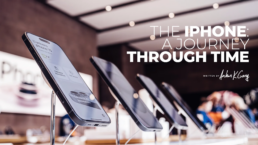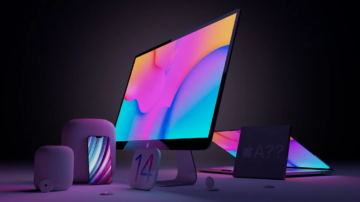In the annals of technological innovation, few products have made as profound an impact as Apple’s iPhone. It’s not just a product, but a cultural phenomenon that has reshaped the way we communicate, work, and play. Let’s embark on a journey tracing the history of the iPhone, exploring its evolution and the transformative effect it has had on the world.
The Genesis — 2007
The iPhone story began on January 9, 2007, when Apple co-founder Steve Jobs unveiled a device that combined an iPod, a phone, and an Internet communication device. Launched six months later, the original iPhone eschewed a physical keyboard for a 3.5-inch multi-touch display, setting the stage for a new era of touchscreen smartphones.
iPhone 3G and the App Store — 2008
The iPhone 3G arrived in 2008, introducing faster data speeds and GPS. But perhaps more transformative was the launch of the App Store. With this, Apple created an ecosystem, allowing third-party developers to create apps that enhanced the iPhone’s capabilities exponentially.
The Faster, Sleeker Era — 2009–2011
The iPhone 3GS (2009) promised improved speed, and the iPhone 4 (2010) brought a new, sleeker design with the introduction of the Retina Display. The iPhone 4s (2011) then ushered in Siri, Apple’s voice-controlled assistant.
Bigger Screens and New Designs — 2012–2016
In 2012, the iPhone 5 graced the world with a taller screen and Lightning connector. The 5s introduced Touch ID, allowing fingerprint recognition, while the iPhone 6 and 6 Plus (2014) responded to the phablet trend with larger screens. 2015’s iPhone 6s and 6s Plus integrated 3D Touch, and the controversial iPhone 7 (2016) eliminated the headphone jack.
The X Factor — 2017
Marking the iPhone’s 10th anniversary, the iPhone X (pronounced ‘ten’) was unveiled. It said goodbye to the iconic home button and introduced Face ID. With its edge-to-edge OLED screen, it offered a look into the future of Apple’s vision for smartphones.
Iteration and Innovation in the iPhone’s Journey — 2018–2021
The subsequent years saw variations of the iPhone X design, including the iPhone XR, XS, and XS Max in 2018. The iPhone 11 series in 2019 brought advanced camera systems. 2020’s iPhone 12 lineup heralded the return of the flat-edged design, 5G capabilities, and the introduction of the Mini model. In 2021, the iPhone 13 continued this trajectory, emphasizing enhanced processing power, camera capabilities, and battery life.
Impact Beyond Technology
Beyond the hardware and software, the iPhone transformed several industries. The App Store revolutionized software distribution and monetization. Industries like mobile gaming saw exponential growth. Social media platforms, photo-sharing apps, and even dating apps owe much of their success to the smartphone era championed by the iPhone.
Moreover, the iPhone played a pivotal role in the rise of mobile photography, turning countless individuals into everyday photographers. Cultural moments, from memes to social movements, have been captured and shared thanks to these devices.
Conclusion
From its inception in 2007 to its iterations in the 2020s, the iPhone has not just been a product but a global phenomenon. It’s a testament to how a piece of technology can redefine societal norms, consumer expectations, and the very way we perceive the world around us. As we await future models, one thing is certain: the iPhone’s legacy as a trailblazing device is well cemented in history.




